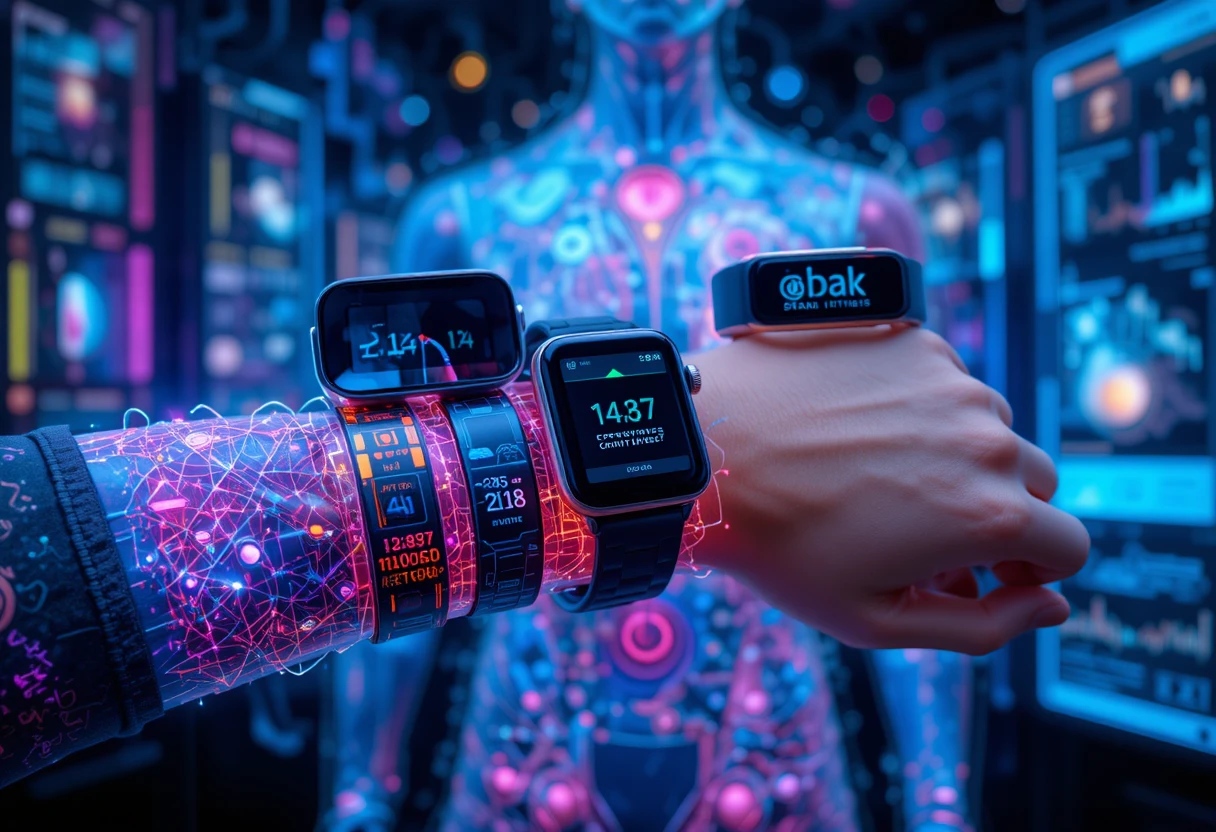Wearable technology has transformed from a futuristic novelty into an integral part of daily life, seamlessly blending advanced sensors, connectivity, and artificial intelligence to enhance health, productivity, and connectivity. As of October 2025, the global wearable tech market is projected to exceed $87 billion, driven by innovations in smartwatches, fitness trackers, augmented reality (AR) glasses, and medical wearables. These devices, worn on the body, empower users with real-time data, from heart rate monitoring to immersive virtual experiences. This comprehensive 3000-word post explores the essence of wearable technology, its history, types, technologies, applications, benefits, challenges, current trends, and future prospects, providing a detailed guide to its transformative impact.
What Is Wearable Technology?
Wearable technology refers to electronic devices worn on the body, typically incorporating sensors, processors, and connectivity to collect data, deliver insights, or enhance user experiences. Unlike traditional gadgets, wearables are designed for mobility and continuous use, integrating seamlessly into daily routines. Examples include smartwatches like the Apple Watch Series 11, fitness trackers like Fitbit Charge 6, and emerging devices like AR glasses or smart clothing.
Core Components of Wearables
Wearables rely on:
- Sensors: Detect physical metrics like heart rate, motion, or temperature.
- Processors: Low-power chips (e.g., Qualcomm Snapdragon Wear) handle data processing.
- Connectivity: Bluetooth, Wi-Fi, or cellular (e.g., 5G) for syncing with smartphones or cloud services.
- Software: Operating systems like watchOS or Wear OS manage apps and interfaces.
- Power: Compact batteries, often with wireless charging, support extended use.
Types of Wearable Technology
Wearables are categorized by function:
- Fitness Trackers: Monitor activity, sleep, and calories (e.g., Garmin Venu 4).
- Smartwatches: Multifunctional devices for notifications, apps, and health (e.g., Samsung Galaxy Watch 8).
- Medical Wearables: Devices like continuous glucose monitors for health management.
- AR/VR Wearables: Headsets or glasses for immersive experiences (e.g., Apple Vision Pro).
- Smart Clothing and Accessories: Embedded tech in fabrics or jewelry for discreet functionality.

The History of Wearable Technology
The journey of wearable tech spans centuries, evolving from mechanical curiosities to sophisticated digital ecosystems.
Early Beginnings: Mechanical to Digital
Wearable tech traces back to the 16th century with portable clocks, like Peter Henlein’s 1505 pocket watch, considered the first wearable timekeeping device. By the 1920s, wristwatches became mainstream. The 1970s introduced digital wearables with the Hamilton Pulsar (1972), the first LED digital watch. In 1983, Casio’s calculator watch added computational functionality, a precursor to smart features.
The 1990s and 2000s: Early Smart Wearables
The 1990s saw experimental wearables like the Timex Datalink (1994), syncing data with PCs via light pulses. In 1999, Samsung’s SPH-WP10 watch phone enabled wrist-based calls. The 2000s brought fitness wearables with Nike+ iPod (2006), integrating sensors into shoes for running data. These laid the groundwork for consumer adoption.
Modern Era: 2010s to 2025
The 2010s marked a turning point with Fitbit’s 2009 tracker and Pebble’s 2012 smartwatch, crowdfunded via Kickstarter. Apple’s 2015 Watch redefined the market with health features and app integration. By 2025, wearables incorporate AI for predictive health analytics, 5G for real-time connectivity, and sustainable designs. The COVID-19 pandemic accelerated adoption for remote health monitoring, with over 400 million wearables shipped annually.
How Wearable Technology Works
Wearables combine miniaturized hardware and sophisticated software to deliver seamless functionality.
Hardware Components
Wearables use low-power processors like Qualcomm’s Snapdragon Wear 5100 for efficiency. Sensors include:
- Accelerometers/Gyroscopes: Track movement and orientation.
- Photoplethysmography (PPG): Measures heart rate via light-based blood flow detection.
- Electrocardiogram (ECG): Detects heart rhythm anomalies.
- SpO2 Sensors: Monitor blood oxygen levels. Displays use AMOLED or OLED for vibrant visuals, with always-on modes for quick glances. Batteries, typically 200-500mAh, support 1-7 days of use, enhanced by wireless charging.
Software and Connectivity
Operating systems like watchOS, Wear OS, or Garmin’s proprietary software manage apps and data syncing. AI algorithms analyze sensor data for insights, such as detecting sleep apnea. Connectivity via Bluetooth 5.0 or 5G enables notifications, calls, and cloud integration. For example, Apple Watch syncs health data to iCloud for long-term analysis.
Data Processing and AI
Edge computing processes data on-device to reduce latency, crucial for real-time health alerts. Cloud platforms like AWS IoT or Google Cloud analyze aggregated data for trends. Machine learning models personalize recommendations, such as workout plans based on user habits.
Types and Top Wearable Devices in 2025
Wearable tech in 2025 spans diverse categories, with leading models setting benchmarks.
Smartwatches
- Apple Watch Series 11: Features advanced ECG, sleep apnea detection, and watchOS 12, priced at $399-$799.
- Samsung Galaxy Watch 8: Offers AMOLED display, Wear OS, and body composition analysis for $349.
- OnePlus Watch 3: Known for 7-day battery life and Wear OS, at $299.
Fitness Trackers
- Fitbit Charge 6: Tracks SpO2, stress, and sleep for $159.
- Amazfit Bip 6: Budget-friendly at $99, with 10-day battery and GPS.
- Garmin Venu 4: Excels in fitness with built-in flashlight and advanced metrics, $449.
Medical Wearables
Devices like Dexcom G7 for continuous glucose monitoring integrate with smartphones for diabetes management. Smart patches monitor vitals in hospitals.
AR/VR and Other Wearables
Apple Vision Pro ($3,499) blends AR/VR for immersive productivity, while smart rings like Oura Ring 4 track sleep discreetly. Smart clothing, like Under Armour’s connected shirts, embeds sensors for athletic performance.

Applications of Wearable Technology
Wearables impact numerous sectors, enhancing functionality and user experiences.
Healthcare and Wellness
Wearables monitor chronic conditions, reducing hospital visits by 20% through remote tracking. Devices like Apple Watch detect atrial fibrillation, alerting users early. Mental health apps use wearables to track stress via heart rate variability.
Fitness and Sports
Trackers motivate users, increasing physical activity by 30% on average. Garmin devices provide VO2 Max estimates for athletes, optimizing training.
Professional and Productivity
Smartwatches streamline workflows with notifications and calendar integration. AR glasses like Nreal Air assist technicians with real-time schematics.
Entertainment and Social Connectivity
Wearables enhance gaming via VR headsets and enable virtual meetups. Smart jewelry offers discreet notifications for social apps.
Benefits of Wearable Technology
Wearables offer multifaceted advantages, driving their adoption.
Health and Wellness Improvements
Real-time monitoring encourages healthier lifestyles. Studies show wearables increase step counts by 2,500 daily. Early detection saves lives, as seen with ECG-enabled devices.
Convenience and Productivity
Wrist-based notifications and payments save time. Wearables reduce smartphone dependency by 40%, per user surveys.
Personalization and Accessibility
AI tailors insights to user needs, while features like voice control aid those with disabilities.
Economic and Environmental Impact
The wearable market creates jobs in tech and healthcare. Eco-friendly designs reduce waste, with 2025 models using recyclable materials.
Challenges and Limitations of Wearable Technology
Despite benefits, wearables face significant hurdles.
Battery Life and Durability
Many smartwatches require daily charging, and batteries degrade after 2-3 years, costing $50-$100 to replace. Durability issues arise in rugged conditions.
Data Privacy and Security
Wearables collect sensitive health data, risking breaches. In 2024, a fitness app leak exposed user locations. GDPR compliance adds complexity for manufacturers.
Accuracy and Reliability
Sensor inaccuracies, especially in skin tone variations, affect metrics like heart rate. Calibration challenges persist in medical wearables.
Cost and Accessibility
Premium devices like Apple Vision Pro ($3,499) are unaffordable for many, and rural areas lack 5G for connectivity.
Current Trends in Wearable Technology (2025)
In 2025, wearables are driven by AI, health focus, and sustainability.
AI and Advanced Health Monitoring
AI enhances wearables with predictive analytics, like sleep apnea detection in Apple Watch Ultra 3. Non-invasive glucose monitoring is nearing commercialization.
Sustainability and Design
Eco-friendly materials, like recycled titanium in Samsung watches, align with green trends. Hybrid designs blend fashion and tech, appealing to style-conscious users.
5G and Connectivity
5G enables standalone wearables, with models like Galaxy Watch 8 offering eSIM support. Market growth is robust, with a 14% CAGR.
AR/VR and Smart Rings
AR glasses like Xreal Air 2 and smart rings like Oura Ring 4 gain traction for niche applications.
From X, users praise OnePlus Watch 3’s battery life and Amazfit’s affordability.
The Impact of Wearable Technology on Society and Economy
Wearables promote healthier lifestyles, reducing healthcare costs by $200 billion globally through preventive care. They bridge digital divides for some but risk exclusion in underserved regions. Economically, wearables drive innovation, with companies like Fitbit and Apple creating thousands of jobs.
The Future of Wearable Technology
By 2030, wearables will integrate brain-computer interfaces for thought-based control and advanced biosensors for non-invasive blood tests. 6G will enable ultra-low latency, and sustainability will prioritize biodegradable materials. Ethical frameworks will address privacy, ensuring equitable access. Wearables could dominate healthcare, with 80% of diagnostics shifting to remote monitoring.

Conclusion
Wearable technology has evolved from simple timepieces to powerful tools enhancing health, productivity, and connectivity. In 2025, devices like the Apple Watch Series 11 and Fitbit Charge 6 lead with AI-driven features, while benefits like early disease detection outweigh challenges like privacy concerns. Trends toward sustainability and 5G integration signal a bright future, where wearables will seamlessly blend into daily life, driving a healthier, more connected world.